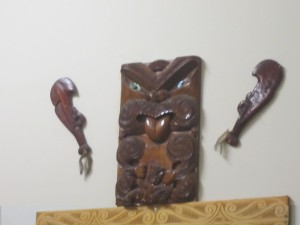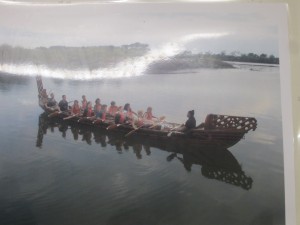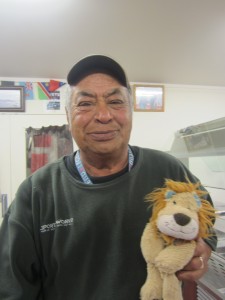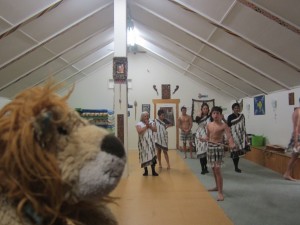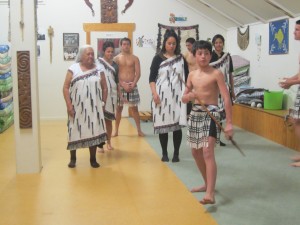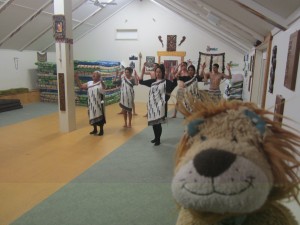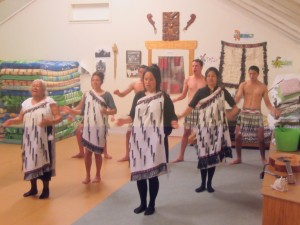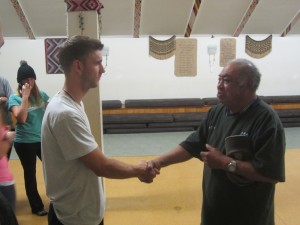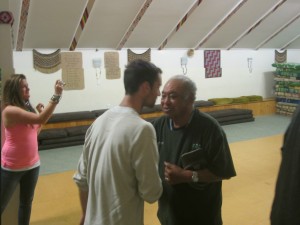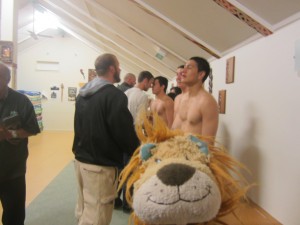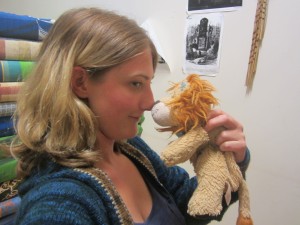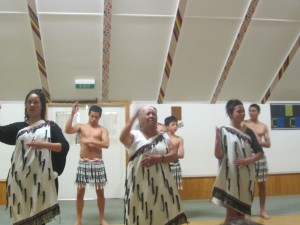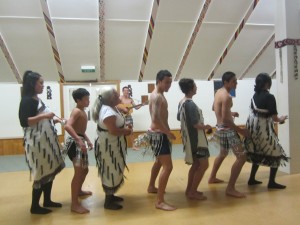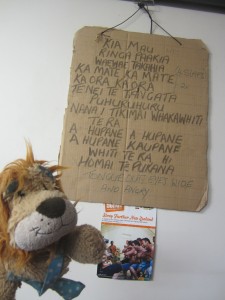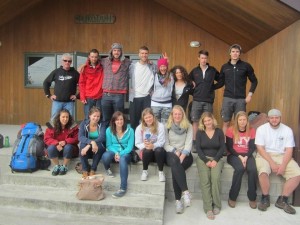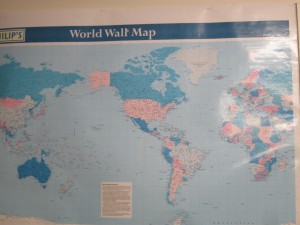Lewis the Lion felt like he was truly starting to discover the ‘real’ New Zealand, none more so than when he visited a Maori whanau (family) marae (meeting house) in Maketu, to the East of the Bay of Plenty.
Here he met members of the local Arawa tribe who had landed on the shores of Maketu in around 1340 AD. They are said to have migrated from Hawaiiki in one of these canoes, a Te Arawa Waka.
Today’s chief of the tribe (iwi) is a delightful gentleman called Uncle Boys. He was very keen to welcome the visitors from all over the world and make them feel at home but first, they had to let him know that they too were willing to be part of the Maori family community. In order for him to know that the visitors wanted to experience true Maori culture, Uncle Boys and his tribe first of all gave them a traditional Maori welcome: a powhiri.
First of all, the traditional welcome took place in the marae, whereby all the guests had to take off their shoes before entering as a sign of respect. They then had to vote in their own male chief for the evening who would act on their behalf in the welcome ceremony. Creag was happy to step in and listened to Uncle Boys instructions carefully so he knew what he and the rest of his tribe had to do during the ceremony. Rule number one: don’t smile as the tribe are meant to be intimidating and if you smile it means that they think they’re not being intimidating enough!
At first the Maori community try to intimidate the visitors with a fearful dance but if the visitors stand up to them, then they then offer them a gift of friendship welcoming them into their community. A feather is dropped on the floor whilst the visitors decide what they are going to do with this gift? Click here to see this video on You Tube.
Creag as the leader of the visitor’s tribe has a choice of what to do with the feather that has been placed on the ground. The biggest insult would be to step over the feather; doing that would mean that Creag would have to leave the marae immediately with his tribe.
However, should Craeg and his tribe wish to stay and be welcomed into the community, he would have to accept the feather by bending down to pick it up whilst maintaining eye contact at all times with the Maori who had presented him with the gift.
Thankfully, Creag chose the second option and the visitors were then fully welcomed into the Maori community, as they performed another welcome song and dance.
As chief of the Arawa tribe, Uncle Boys then welcomed Craeg and his tribe by greeting him with the hongi. This is where people shake hands and then touch their noses and foreheads gently together, maintaining eye contact.
After Creag had been welcomed by the chief, he then led the rest of the visiting tribe to greet all the other members of the Maori community, one by one.
After Helen had taken her turn at using the hongi greeting with all of the members of the Maori community, she also showed Lewis the Lion how it is done, as you can see in this photo:
After the welcomes had taken place successfully and there was a more relaxed feel to the evening, the Arawa tribe (which was made up of many young people representing their community), performed more cultural songs and dances for their guests.
Lewis the Lion was very impressed by the young people of the Maori community as they played instruments and performed for their visitors. Click here to see a snippet of their performance on You Tube,
The women of the community then demonstrated an ancient Maori art of the poi. This is where they dance with balls on a string in time to the music. (Originally this would have been a rock on a string). Lewis the Lion thought that they made it look incredibly easy but he was sure that it wasn’t! If you would like to see how fantastic the girls were at twirling these balls in a dance, go to this video clip on You Tube.
The next part of the evening was the part that Lewis the Lion had really been looking forward to, when the boys performed the famous routine of the haka. The haka was originally a challenge to war and thus was meant to be scary and intimidating for the onlooker. Lewis the Lion was mesmerised at the way the performers were fully engrossed in the haka. They seemed to slap their thighs and chests so hard that they were producing red marks on them. He even jumped a little when they starting pulling scary faces too, sticking their tongues out as far as they could. (He was reminded of another Polynesian tribe that he had seen on Easter Island doing something similar).
To see this intimidating performance, go to this You Tube clip but be warned of flash photography as there were many other people at the event who also wanted to take photos and capture the magic of it.
For the next part of the evening, the visitors were fully involved as the girls learnt how to dance with the poi balls and the boys learnt how to perform the haka. Lewis the Lion who was with the boys, tried his best to learn all the words to this famous dance, as you can see on the photo above. Lewis the Lion also learnt that the performer of the haka should draw on energy from the earth and feel the earth’s power surging through them as they stamp their feet and beat their chests.
Here are the words of the most famous haka.
Ka mate!
(The most common haka – war challenge!)
Ka mate! Ka mate! Ka ora! Ka ora! I die! I die! I live! I live!
Ka mate! Ka mate! Ka ora! Ka ora! I die! I die! I live! I live!
Tenei te tangata puhuru huru This is the hairy man
Nana nei i tiki mai Who fetched the sun
Whakawhiti te ra And caused it to shine again
A upa… ne! Ka upa… ne! One upward step! Another upward step!
A upane kaupane whiti te ra! An upward step, another… The sun still shines!!
Hi! Hi!
This most well-known haka of all is said to have been composed by a Maori chief called Te Ruaparaha in around 1820. The words reflect a battle story where the ‘hairy man’ called Te Wharerangi gave Te Ruaparaha protection.
The group then got the opportunity to perform their respective dances for each other: the girls dancing with the poi balls and the boys performing the haka. Each group was very impressed at what the other had managed to achieve in such a short space of time!
After a successful evening, the visitors then slept in the marae in the traditional way with mattresses on the floor. What a wonderful and successful cultural evening Lewis the Lion had had with the Arawa tribe. Uncle Boys then told the group that they were all part of the Maori whanau now: his Maori family and that they were welcome to come and visit whenever they liked.
Before the visitors left, Uncle Boys got them to do one last thing: have their photo taken together as he said that he liked a photo of all his whanau from all over the world!
As Lewis the Lion took a photo of a special map in the marae before he got back on to the Stray Bus, he felt happy to think that he belonged to such a big family that covered the whole world from whichever way you looked at it!
Like Lewis the Lion, why don’t you try to learn the words to the haka?
Watch the You Tube video again and see if you could perform it in an intimidating way like the boys of the Arawa tribe.

